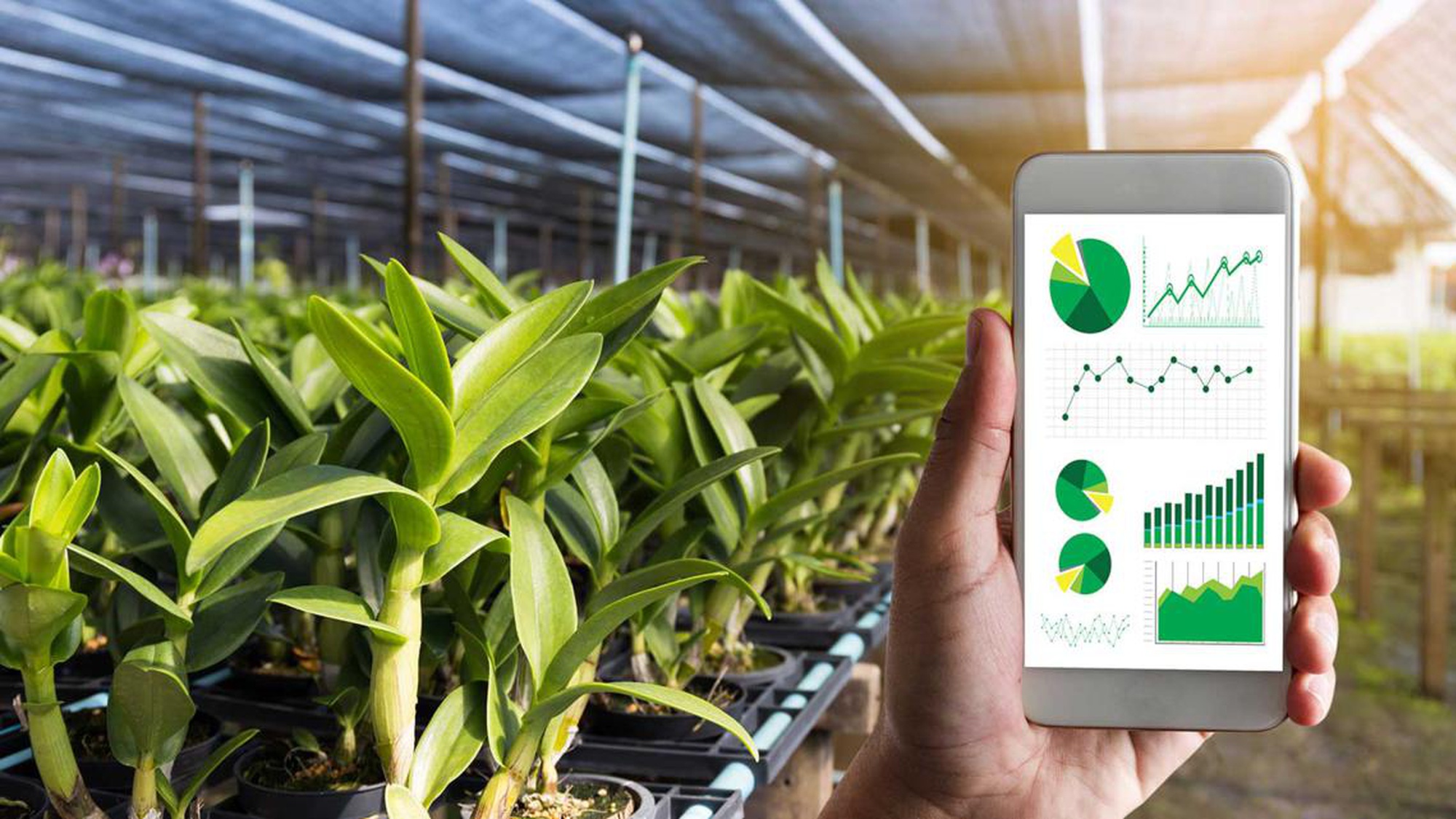If you want to bring an idea to life, you have a 90% chance of failure and only 10% for success. That is pure statistics. It didn’t discourage us from creating and launching our own startup.
Here, I want to share how the idea of launching a commodity trading platform came to life and what practical experience we gained while developing agri marketplace.
How It All Started
The job of a commodity broker is a real headache. Emails and calls with potential and existing clients, monitoring the stock exchange, negotiating contracts (especially this part), answering questions — that’s a lot of tabs… well, to keep tabs on.
But what if they had a one-stop-shop online agri commodity trading marketplace to look for counterparties, negotiate deals, find logistic operators, and exchange documents, all in one place?
Together with my friend, a financial trader, investor, and businessman, we thought it was a brilliant idea. He had the money and I had a development team, and also experience in creating IT products. Altogether it sounded like a pretty good start for creating a b2b agri trading platform.
We Did Everything Right, Along Textbook Lines
It wasn’t our first time launching a business, and we had a good idea of what steps to take. Here's what we did.
1. Formed a vision
Considering this heavy-handed process, we wanted to develop an ecosystem that would optimize the workflow for both buyers and sellers, and support both parties starting with finding each other and ending the deal is sealed.

2. Created the value proposition
Here’s where we tapped into the problems that both parties faced and offered them a procurement platform where you could find a trading partner and check physical market indexes. It would have transparent prices, discovery mechanisms, and reduce the possibility of fraud.
3. Created the customer journey map
After conducting deep interviews with the middle-range brokers, farm holders, and traders, we modeled the customer journey and created a user interface that corresponded to the customers' needs.

4. Choose the appropriate technologies

For the back-end, we used Django, a flexible framework that allows quickly scaling the product and the team. We already had sufficient experience working with it. And yes, it’s a go-to option for startups, as it allows building robust products in a limited time frame. Time and money, that’s what you don’t have much of when creating an MVP.
We used Vue.js for the client-side. Also, a flexible and scalable technology that saves time on building applications of different size. It’s great for developing dynamic features, and it has MVVM architecture that facilitates two-way communication, which helped us create a real-time messaging system.
It didn’t hurt that our developer had experience with Vue.js — an important and cost-effective factor. Use the technology you are familiar with, of course, if it fits your purpose and project requirements.
5. Built the platform
Our team already consisted of two designers, an architect and backend developer, a frontend developer, a QA engineer and me as a Product Manager. So we dived into building the platform.

Read also how we developed a home care business management software as well as how to integrate telehealth into EHR.
The Main Features
Here’s what we created for the first version of the agri commodity trading marketplace:
-
The listings system. A tool for posting information about the produce (e.g., name, grade, specification, condition, etc.). Users can create an unlimited number of listings and filter existing ones by parameters.

-
User profiles and compliances. We created a simple onboarding system where users registered in 3 steps by adding:
-
User information (name, job title, contacts);
-
Company information (name, size, type, registration number);
-
Registration certificate (optional);
-
-
Contract system. A tool for facilitating transactions between buyers and sellers.

Users could make counter offers up until they agreed on the conditions and the deal was signed. -
Messaging system. Threads for discussing questions related and unrelated to a contract, and with Aliro administration.

The admin panel for:
-
Mark the clients that have passed onboarding;
-
Customer support;
-
Verifying counterparties;
-
Categorized listings;
-
Adding and tagging blog articles;
-
Managing admin staff;

We had a perfectly working listings system, messaging, contract, user profile, and compliance systems within 8 months. The MVP was done and test.
And finally, it was time for the big day.
The Launch
We launched our b2b agri commodity trading platform online with a relatively small team of designers, developers, and sales representatives, and a fully working MVP. Now, we could go on conquering new heights. And the next peak was attracting users.
Surely we won’t get customers until you have something to offer. So, we got a sales team to call potential sellers and promote the platform.
They got back with great feedback. A lot of sellers wanted an additional tool to distribute their products. The number of companies and listings grew each month.
Everything was working out quite well. We had a good base of sellers, many loyal and positive feedbacks. We had all the necessary features to make our customers happy. Yet, there is always a ‘but’.
What we learned about the target audience
The whole reason a startup needs to make so many small steps and sometimes even pivot is that you know so little at the very beginning. About the market, about the customer, about the effect the product will make, etc. There are too many unknown variables. You have an idea and you can offer it to people, but it is only through testing — trial and error, so to speak — that you can hone an idea into a successful product.
After testing the first version on the market we learned how business is really done on the market we chose:
-
20% of the market players control 80% of the deals. Many of these big players don’t understand the value of an agri commodity marketplace at the beginning, just because buyers find them without any additional tools. So, attracting this big fish needs a specific approach.
-
Some companies are used to keeping the deals blurred and private. This is something to take into account when developing the product. You don't have to impose your own rules to the market players — you need to help them simplify their existing game.
-
Many people and companies are used to the old ways. It’s a matter of habit that they would rather make calls and send emails, instead of using our messaging system. And you have to be ready that it needs time to change habits.
Read also how to develop a hospital management system as well as assisted living facility software.
Creating the Tender System
After launching the commodity trading platform and getting the first feedback we decided to add a new big feature. The idea came from our business developer. He had an experience trading on the oil commodity market. When he needed to sell, he would go back and forth negotiating with buyers who offered their best price and he chose the most lucrative deal. So, we decided to implement a similar mechanism in our marketplace.
The idea was to make a two-way auction system. For sales, each bid would increase, while for the buying auction — the price would go down with each offer. The auction creator would limit the time for the tender and invite verified counterparties to the bidding.
We went to market with this mockup, and the feedback was mostly positive. 80% of respondents said they could see the benefit in such a system, that it would save much time and effort.
Here we also gained some important insights you need to consider launching a similar product:
-
A complicated system is always, well, complicated. Even if people say they would love to use something like you create, this doesn't mean they will understand the idea 'on the fly'. Be ready to educate, and educate a lot.
-
Again, habits are strong. Even if somebody likes your product, they will need time and effort to take the new path. For your startup, it means additional time and monetary contribution.
Unfortunately, at this point, many startups run out of money (and we also did), so be sure you consider these risks when planning.
What We Did Really Well
In fact, we did many things right, and there was a lot to be proud of.
Easy onboarding
At first, we wanted to create a comprehensive registration process with multi-level verification and mandatory certification but quickly discerned that it wouldn’t be well-received. We simplified the process so a user could register in two steps and start browsing the commodity trading platform right away.
Awesome features
Some of the features were real winners. You can take them to any industry marketplace (e.g., pharmaceuticals).
-
Tender system. We made it so the users could sell expensive and buy cheap. It’s a nifty tool where bidders cannot see each other’s company names and the tender initiator can only see the winning bidders.
-
Listing system. It’s the basis of a marketplace — the tool for users to post information about the products you want to sell or buy; add parameters and filter listings by these parameters.
-
User profile and compliance. The feature for the onboarding system — minimalistic and necessary for making the system transparent and preventing fraud.
Lean methodology
It’s creating a buzz these days, but not everyone fully appreciates what it can give to a startup — startups have to be more flexible to face the issues and change direction on time. We spent 8 months and developing an MVP, and when users started coming, we followed their customer journey within our online commodity trading platform and saw the changes we needed to make.
Deep customer interviews
They are so important for creating the customer journey and modeling the user interface, but the biggest outtake for us was more philosophical. When we interviewed the audience, most of them were interested in the features we proposed and thought of them as useful. But when it came to actually use the platform, it turned out that the features weren’t as practical as everyone thought.
The Bottom Line
Although we had to stop operation one and a half years into the project, it gave us an immense experience in the industry and building an agriculture commodity trading marketplace. In fact, the platform itself worked well. We were right about the choice of technology: Django and Vue.js are great for the functionality we needed. Moreover, they both provide a great deal of flexibility and save time on marketplace development so they fulfilled our expectations as a startup.
We also learned a lot about the target audience. What core features agri traders, brokers, and farmers need in an online marketplace for agriculture trade and how to approach their issues. As well as the features they are not quite ready yet, that would require more thought and a longer onboarding process, like the messaging system or contracts.
Would we try for another commodity marketplace development? There’s no reason not to. And with the knowledge and experience we received from this project, we are motivated to take it further into developing new marketplaces.




